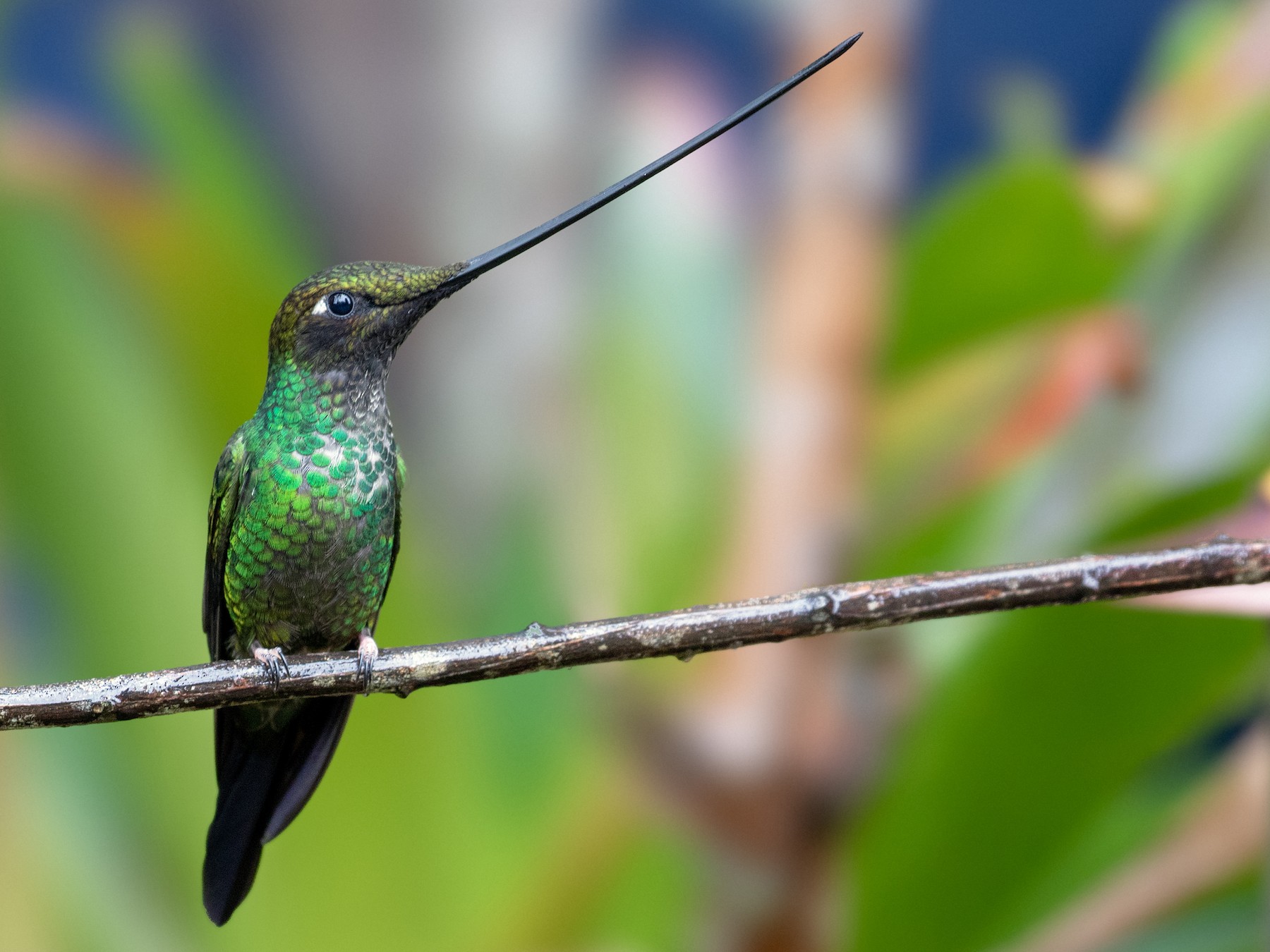Birds exhibit an incredible diversity of beak shapes and sizes, each finely adapted to their unique ecological roles and feeding strategies. While some birds have short, stout beaks for cracking seeds, others have evolved impressively long beaks that serve specialized purposes. We’ll delve into five remarkable birds with some of the longest beaks in the avian world, highlighting the astonishing variety of beak adaptations.
Sword-billed Hummingbird
The sword-billed hummingbird, native to the Andes Mountains of South America, boasts an extraordinarily long beak, often exceeding the length of its body. Unlike typical hummingbirds with short, tubular bills for nectar-feeding, this species has a slender, sword-like beak. This remarkable adaptation allows it to access nectar from deep, long-tubed flowers that other hummingbirds cannot reach. In doing so, it plays a crucial role in pollinating these unique floral resources.
Ivory-billed Woodpecker
The ivory-billed woodpecker, once considered one of North America’s largest woodpeckers, features a long, chisel-like beak ideal for its foraging habits. These birds are known for excavating deep into tree trunks in search of wood-boring beetle larvae, a staple of their diet. Unfortunately, the ivory-billed woodpecker is critically endangered and possibly extinct, with only a few unconfirmed sightings in recent years. Conservation efforts persist in hopes of rediscovering this majestic bird.
American Avocet
The American avocet, a graceful wader bird inhabiting North and Central America, possesses a striking upturned bill that is both long and slender. This unique beak shape is tailor-made for its feeding style. American avocets frequent shallow waters and mudflats, employing their long, curved bills to sweep through the water’s surface. In this manner, they capture aquatic invertebrates and small fish with remarkable precision, contributing to the balance of these ecosystems.
Northern Jacana
The northern jacana, a tropical wader bird found across the Americas, is characterized by its exceptionally long toes and equally long, slender beak. While their beaks may not be as elongated as some other species, they remain fascinating adaptations. Northern jacanas inhabit wetlands and marshes, where they walk on floating vegetation without sinking. Their long beaks are crucial for capturing insects and small prey from the water’s surface, making them proficient hunters in these environments. The coexistence of their long toes and beaks demonstrates nature’s ingenuity in crafting specialized tools for survival.
Long-billed Curlew
Among shorebirds, the long-billed curlew stands out with its exceptionally long, curved beak, which can reach lengths of up to 8 inches. These beaks are perfectly suited for probing deep into sand or mud to locate burrowing invertebrates such as crabs and worms. Long-billed curlews are commonly found in coastal and intertidal habitats, where their specialized beaks provide them with a significant advantage in capturing prey hidden beneath the surface. Their distinctive calls and striking beak shape make them easily identifiable and charismatic birds along North American shorelines.























